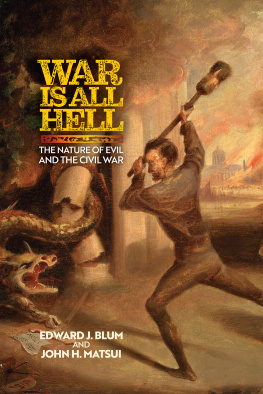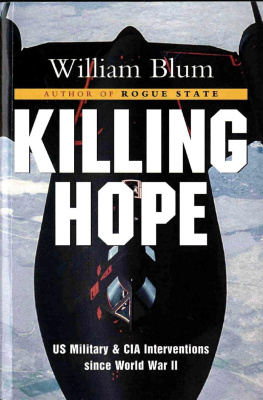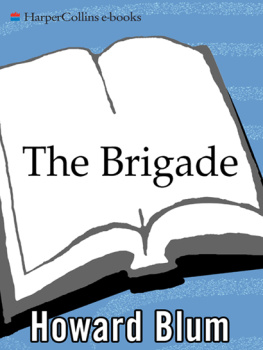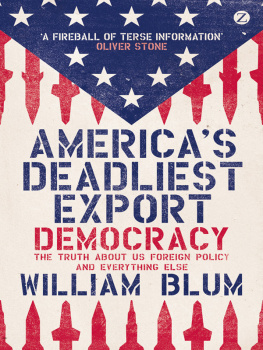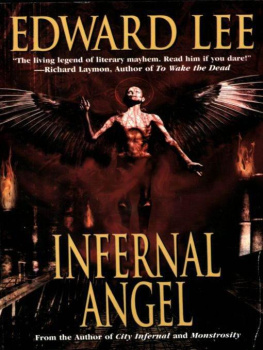Edward J. Blum - War Is All Hell
Here you can read online Edward J. Blum - War Is All Hell full text of the book (entire story) in english for free. Download pdf and epub, get meaning, cover and reviews about this ebook. year: 2021, publisher: University of Pennsylvania Press, Inc., genre: Politics. Description of the work, (preface) as well as reviews are available. Best literature library LitArk.com created for fans of good reading and offers a wide selection of genres:
Romance novel
Science fiction
Adventure
Detective
Science
History
Home and family
Prose
Art
Politics
Computer
Non-fiction
Religion
Business
Children
Humor
Choose a favorite category and find really read worthwhile books. Enjoy immersion in the world of imagination, feel the emotions of the characters or learn something new for yourself, make an fascinating discovery.
- Book:War Is All Hell
- Author:
- Publisher:University of Pennsylvania Press, Inc.
- Genre:
- Year:2021
- Rating:5 / 5
- Favourites:Add to favourites
- Your mark:
- 100
- 1
- 2
- 3
- 4
- 5
War Is All Hell: summary, description and annotation
We offer to read an annotation, description, summary or preface (depends on what the author of the book "War Is All Hell" wrote himself). If you haven't found the necessary information about the book — write in the comments, we will try to find it.
War Is All Hell — read online for free the complete book (whole text) full work
Below is the text of the book, divided by pages. System saving the place of the last page read, allows you to conveniently read the book "War Is All Hell" online for free, without having to search again every time where you left off. Put a bookmark, and you can go to the page where you finished reading at any time.
Font size:
Interval:
Bookmark:


The Nature of Evil and the Civil War
Edward J. Blum and John H. Matsui

UNIVERSITY OF PENNSYLVANIA PRESS
PHILADELPHIA
Copyright 2021 University of Pennsylvania Press
All rights reserved.
Except for brief quotations used for purposes of review or scholarly citation, none of this book may be reproduced in any form by any means without written permission from the publisher.
Published by
University of Pennsylvania Press
Philadelphia, Pennsylvania 19104-4112
www.upenn.edu/pennpress
Printed in the United States of America
on acid-free paper
10 9 8 7 6 5 4 3 2 1
A catalogue record for this book is available from the Library of Congress.
ISBN 978-0-8122-5304-7


Abraham Lincoln begged his fellow Americans to be friends, not enemies. It was 1861 and he had just become president of a disuniting United States. He concluded his first inaugural address hoping that the better angels of our nature would save the nation from separation and war. Lincolns wish failed to come true. The better angels failed to materialize. God and his heavenly hosts seemed absent, quiet, and dumb, unable to answer Lincolns prayers. These sacred forces often seemed idle during the next four years as one government became two, as hundreds of thousands of men and then millions marched to kill one another, and as Americans destroyed so much of what they had strained to build. In the decades preceding Lincolns election, God appeared just as impotent. When it came to the nations most divisive issuepeople owning other people, or what is simply called slaverythe Lord seemed either unable or unwilling to destroy the so-called peculiar institution.
Another angel incarnated instead and brought his legions with him. This angels dominion grew as the war raged. Known originally as Lucifer, most Americans more often called this force Satan, the mythical fallen angel from heaven who lorded over hell with his fellow devils. A demonic contingent, not an angelic host, invaded every aspect of American society during the middle of the nineteenth century. They seemed intent on transforming the earth into hell. And as much as Americans feared these powers, fact was more sinister than fiction. It was Americans who created the devils, unleashed them, redesigned them, and cheered them as they wrought havoc. American politicians, reformers, writers, artists, mechanics, foot soldiers, nurses, homeworkers, and countless others made and remade devils. Then, in acts of profound and brilliant misdirection, they accused others of summoning hell to earth. During the Civil War, the war Lincoln hoped to avoid but nonetheless presided over, Americans brought Satan, demons, and hell to bear on nearly every aspect of their country.
Only a few years before Lincolns inaugural, another Kentuckian dreamed of angels. After artist C. R. Milne skimmed Uncle Toms Cabin (1851), the antislavery novel from Harriet Beecher Stowe that captivated much of the world, he rushed to respond. The novels story of heroic and silly African Americans, of kind and horrible whites, and of an overall societal structure of slavery that supported the most heinous of behaviors led him to manifest a dream on paper. Devils, dragons, and countless other bizarre beasts dominated the landscape. They grabbed; they pulled; they burned copies of Stowes book. Some of them were armed with muskets; some were hybrid cannon machines: part creature, part mortar, all wicked. Several assaulted Stowes body directly in a tunnel labeled Underground Railway. They yanked on her clothes and limbs. One stuck her in the back with a pitchfork. Another shackled irons onto her feet. She defied them, holding her novel above her head. An exposed page of her book read I love the blacks (a sentence nowhere to be found in the novel).
Before the middle of the nineteenth century and the wrenching Civil War, devils like the ones in this print danced throughout American society far more than the better angels of Lincolns speech. The history of European expansion in the Americas, in fact, cannot be told without reference to Satan, the demonic, or hell. Even from their beginning, Europeans narrated their invasion of the western hemisphere with attention to evil forces. In his A Brief Account of the Destruction of the Indies (1542), Bartolom de Las Casas explicitly invoked the demonic. Some English translators subtitled his book, a Faithful Narrative of the Horrid and Unexampled Massacres, Butcheries, and all Manner of Cruelties, that Hell and Malice Could Invent. In the text, Las Casas wrote that some wicked Devil possessed the minds of the Spaniards and led them to such Inhumanities and Barbarisms that no Age can parallel.
In the colonial lands that later revolutionized into the United States in the 1770s, devils seemed to flourish too. For every Puritan who hoped to build a city upon a hill, there were other English men and women, like poet Michael Wigglesworth, who saw in the new lands hellish fiends That Devils worshiped.
By the middle of the nineteenth century, malevolent spiritual forces seemed to be on everyones tongue. Novelists toyed with gothic themes of dark, uncertain powers working in the midst of Americans. Nathaniel Hawthorne not only revisited colonial witchcraft in The Scarlet Letter (1850), but also updated John Bunyans Pilgrims Progress with one now set in the modern United States. Hawthornes short story entitled The Celestial Railroad (1843) featured the devil as the engine conductor of a locomotive. References to sacred wrongdoers punctuated American society. Temperance advocates of the age attacked the distribution and consumption of demon rum, while Protestants assailed religious innovations, such as spiritualism and Mormonism, as led by people who were deluded by Satan. The prince of evil even became popular entertainment, useful in the growing commercial realm of amusement. By the 1850s, the most popular exhibit at Peales Museum in New York was a tour of the Infernal Regions, where Beelzebub and Lucifer guided onlookers on an excursion through hell.
Nowhere did the presence of evil become more apparent or visceral than in sectional debates over slavery. There, invocations of devils, demons, and hell worked to fracture the nation, to disunite that which had been fragilely united only decades earlier. It began with African American antislavery voices. Many of those who had achieved freedom from slavery and told their stories linked slavery to hell and slaveholders to demons. From there, concepts of evil moved into the speeches of white abolitionists, proslavery advocates, and Congressmen. These elected officials of the 1850s tore the country apart rhetorically before they did so legislatively. When the war came, the devil and demonic history became important players in the political culture of the day, the commercialization and profiteering from the struggle, the ways artists attempted to visualize key aspects of the conflicts, and the ways countless Americans expressed their experiences.
Font size:
Interval:
Bookmark:
Similar books «War Is All Hell»
Look at similar books to War Is All Hell. We have selected literature similar in name and meaning in the hope of providing readers with more options to find new, interesting, not yet read works.
Discussion, reviews of the book War Is All Hell and just readers' own opinions. Leave your comments, write what you think about the work, its meaning or the main characters. Specify what exactly you liked and what you didn't like, and why you think so.

